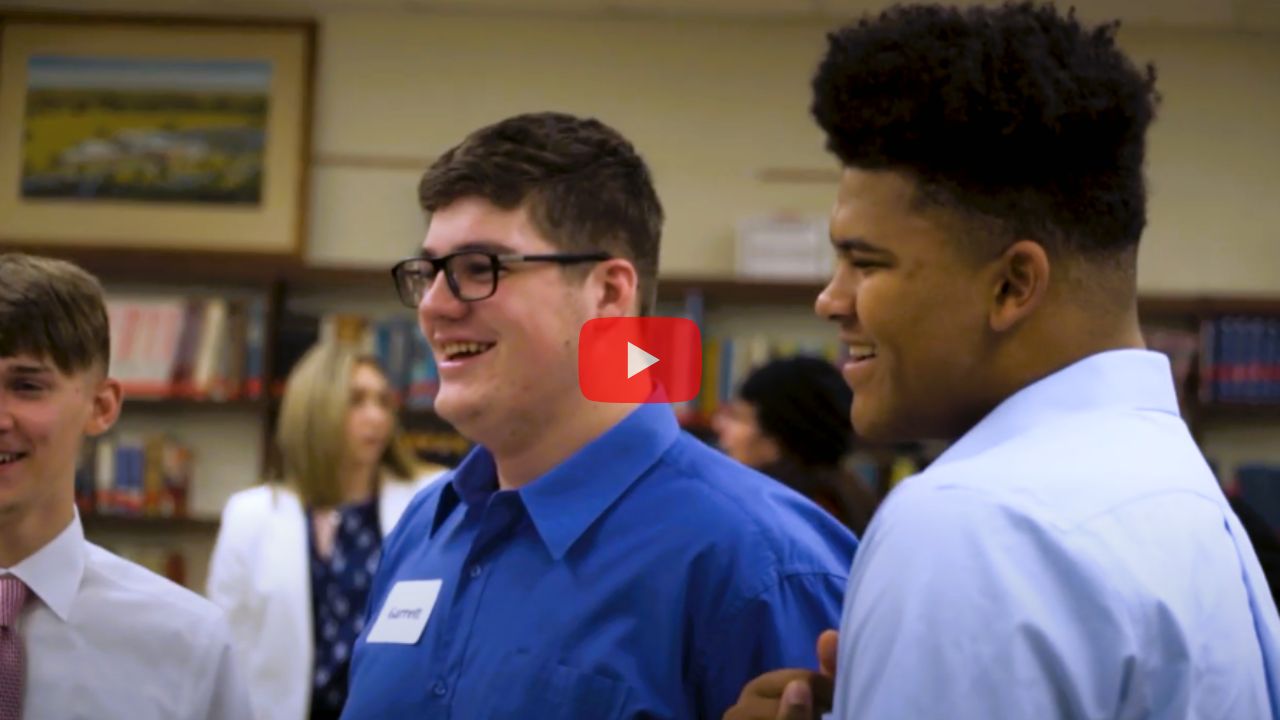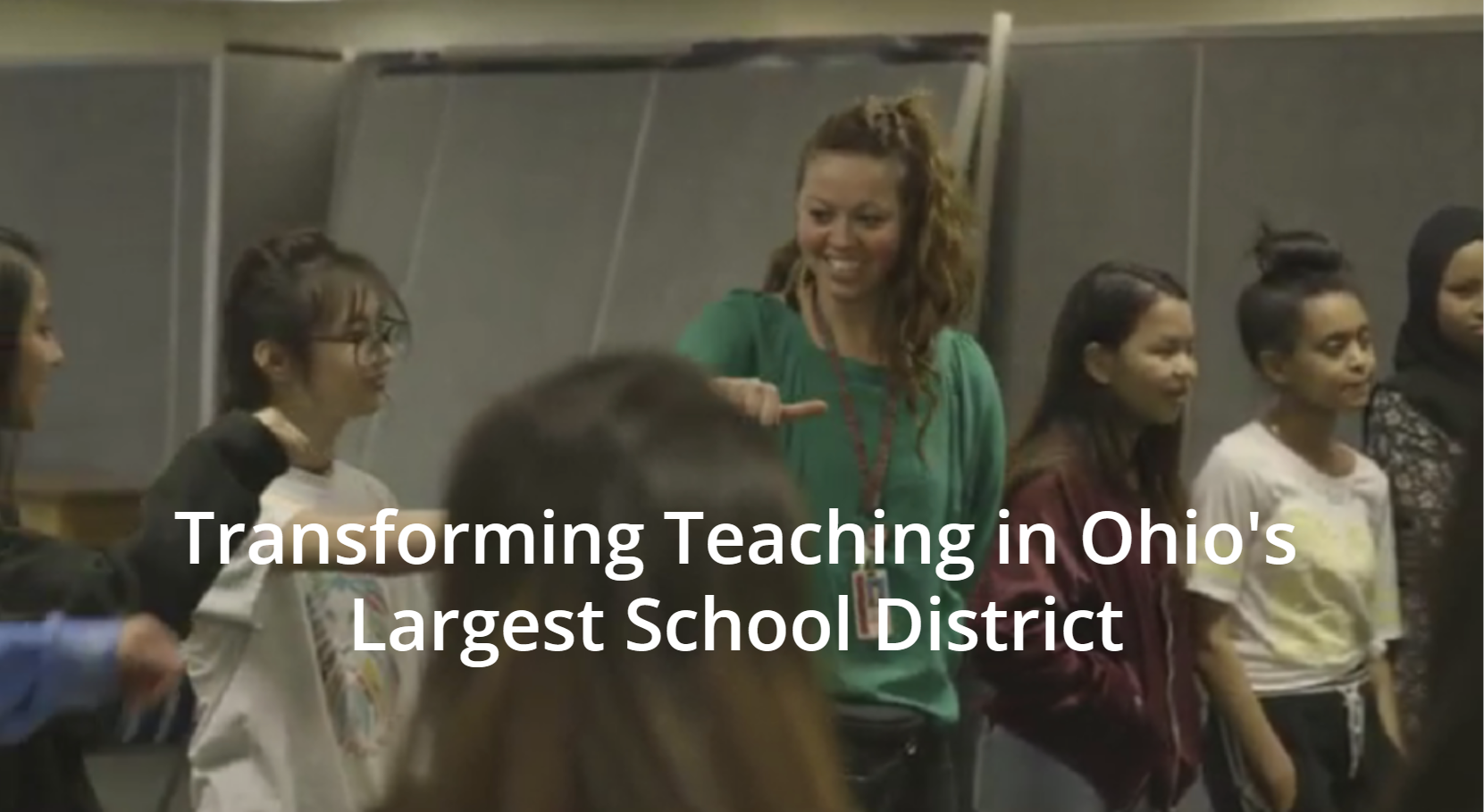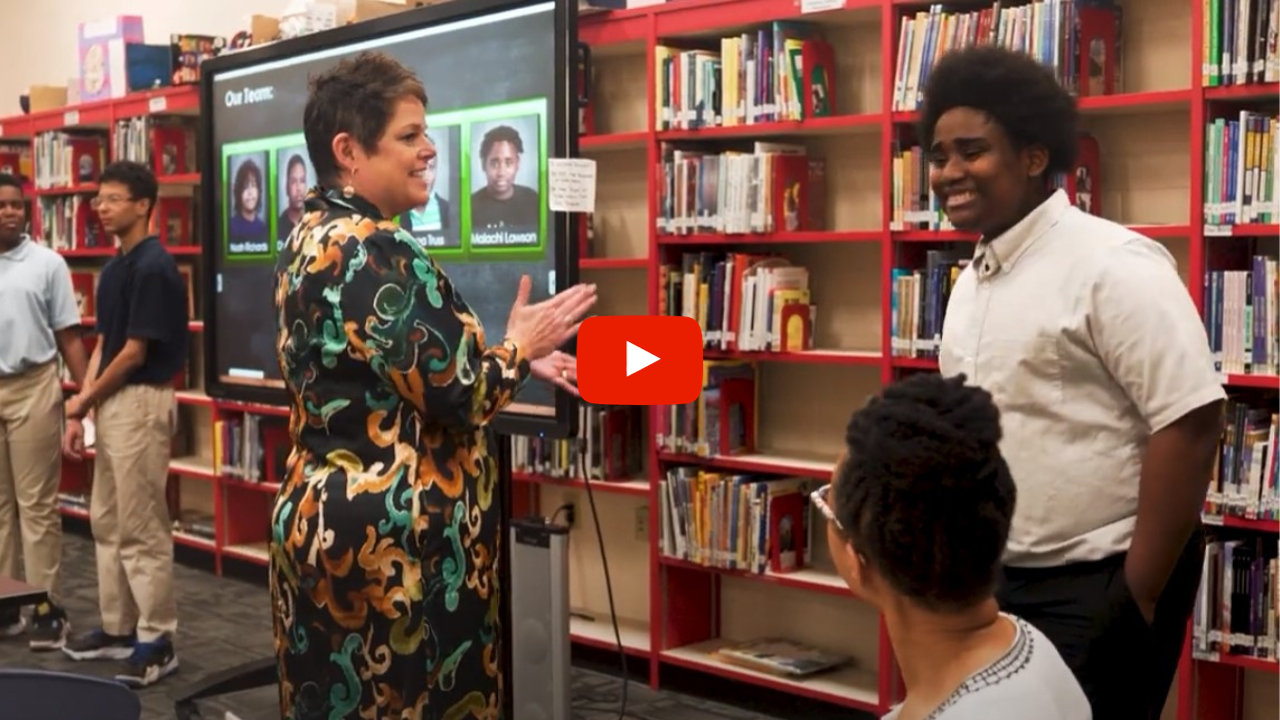In this episode, Tim and Alison discuss the importance of a growth mindset for teachers and students in this radically different method of teaching and learning. They also explain why answering questions with questions promotes critical thinking, problem-solving and student ownership of the learning.
Alison: I’m curious what you do when, for example, a team is struggling in the midst of their problem-solving and they ask you a question that might be specific to an industry or some kind of content that maybe you don’t have a lot of background in. How do you approach that?
Tim: Well, that happens a lot. First of all, most of the problems that these students are working on are so sophisticated and so complex that even the CEO doesn’t know what to do with them yet.
That’s a big part of this. The very nature of the problem is such that no one really has an answer. Everyone can come up with an educated guess as to what the solution might be, but no one really knows. That’s part of what the kids are trying to figure out, it’s also the thing they ask us a lot early on.
Alison: Right, right.
Tim: Like, how do I do this? We always say, “Well, I don’t know. That’s what we want you to figure out. How do you do this?”
Alison: And they get mad, too.
Tim: They do.
Alison: They’re so frustrated in that moment.
Tim: Right, because early on, they are expecting that we know what the answer is and that we are going to wait for them to arrive at it and then we’re going to pat them on the back and say, “Congratulations, you have now discovered the answer, young grasshopper. It is exactly what we had thought.” That’s not how it works.
But because of that, there’s also a piece of ego you kind of have to surrender. I’m sure you’ve felt this as well over the past semester. What I mean by that is students asking about a particular problem and you not having any idea what to do.
The pat answer we have and what we tell people in our workshops is that you answer questions with questions, but it’s really more than that. The reason it’s more than that is because anyone can parrot back or ask questions, but you have to be able to set them up so that they know they have to look for the answers, that there’s something out there that they can look for.
A good example is there was a team this past semester that I was working with and they were trying to solve the problem of food deserts in urban spaces. They were looking at different demographics and trying to figure out why were people not eating healthy in certain urban areas. Why were they relying on fast food and convenience stores?
And I didn’t know; I had no idea. That’s not where I live, it’s not my lifestyle, and so I would honestly tell them, like, I don’t know. What I remember doing is saying, “Well, maybe you need to go and talk to some people. Maybe you need to go to a neighborhood in Cleveland that’s most like the one that’s suffering from the problem you’ve identified and talk to those people and ask them.”
So that’s an example of using a question to a question. It was also sort of encouraging them not to ask leading questions, to ask for stories and to detect patterns in behavior that would help them arrive at some type of conclusion about the behavior. We all know that people don’t always do what they say, and so it’s really important to kind of dig a little bit deeper.
But that’s really hard to do because most teachers in the traditional sense are content area experts and they are used to being armed with a lot of content. They know it and they’re passionate about it. They read books on it all the time and they stay up on it. In this type of learning, because it’s not content, it’s not entirely content-based in sort of siloed disciplines like regular school is, you can’t possibly be a content area master because there isn’t one particular content.
Alison: Right. One semester, you might be ranging from an industry like fast casual dining to something like genetics and then ending with an industry such as, I don’t know, dental insurance. It really ranges all over the map. It’s almost silly to imagine that anyone should have all of the answers, and that’s exactly what it seems we push back on the students.
Tim: When we were having lunch today we were talking a little bit about this topic. I’m wondering if you could maybe talk a little bit about what it’s like for you to go in and work with a team maybe before or after I have or Doris has? Maybe not all programs are going to have more than one teacher, but the schools always have people that you can call in and help out. The teacher across the hall can come in and be an objective ear on something. What did that feel like for you with none of us being content area experts necessarily in that particular one?
Alison: Right. No, that’s a great point that you bring up. The reality is, I think in this work, what I’m learning as a teacher in training of this kind of a model is that you really benefit from having an entrepreneurial mindset as a teacher in this role. What I mean by that isn’t that you’ve started a business and have all kinds of expertise in that realm, but more so that you yourself are a problem-solver and are looking for creative solutions. You’re also very resourceful.
This is where it ties into the question you’re asking in that I think it’s a real skill to be able to identify what resources are around you to support you in moving towards your solution. I know it’s something we work with the students a lot on. But even in the role of a teacher, I’ve found myself having to take a step back a lot of times. I’d go into the room, and the students would be asking me some questions about where they were with their challenge and what I thought about it, or, you know, here’s some research we found, what do you think?
You know, we say answer questions with questions, and sometimes I would get stuck. I felt like, well, I’m not sure I’m actually the most helpful person here right now to ask these specific questions of you. So to be able to say, “You know what? I actually think that’s a better question for Mr. Desmond,” and being able to pop out of the room and have you go in instead, or if it’s something more specific to what Ms. Korda’s experience has been.
There’s a nuanced way of, again, not asking leading questions, but when you have a bit more experience in a certain area with regards to the problem-solving. So again, it’s not specific to the content, but it’s about how you get to that solution. If you’ve had more experience doing that, you’re able to ask the type of question that prompts the students to then do their own learning to get there.
I really appreciated having the two of you around and able to also bounce around, because certainly a team is, you know, more heads are better than one, I suppose. As you mention, any school, no matter how you’re set up, whether it’s team teaching or just a solo teacher, should be able to at least have other resources around them to be able to help come in and ask those questions of the students.
In some of the groups you’ve worked with at workshops, some of the different educators that you’ve worked with, what were some of the questions that you found yourself answering a lot with regards to kind of this teaching mindset, or approaching this style of teaching?
Tim: I think “mindset” is a good word that we’re using here to describe this because it’s similar to Carol Dweck’s growth mindset. It’s this idea that you believe everyone can learn all the time and that there’s not a moment where your brain calcifies and you can no longer learn. Just because you’ve always been bad at math, that you’ll never be good at math from a student perspective. It is a mindset thing.
One of the things that I find myself saying over and over again in working with teachers in these workshops is this idea that you have to take risks and you have to be transparent and you have to admit and say when you don’t know something, because if you don’t, kids know it anyways. They’re pretty perceptive. You can’t really fake your way through something, and so there’s no point in trying.
And so you try stuff, and when things don’t work, you say to the class, “Hey, you know what? That didn’t work.” So it really is about having a different mindset, and part of that mindset is relinquishing the content knowledge king idea.
Alison: Right.
Tim: The way that you do that is you allow other people into the teaching process. We’ve said, you know, it should be or can be easy in a school to find someone to come in, and even if they don’t know anything about the particular problem, they can come in and have students ask them questions or get feedback on a presentation. Just having a different set of eyes and ears in the room can be very helpful.
Even if you’re incredibly isolated or your schedule is such that arranging that is really difficult, you can use the tools of technology today to accomplish the same thing. You can Skype people. You can do Google Hangouts. You can even have kids make phone calls. They can talk to people who might be more of an expert in this particular area and just sort of get a different perspective.
The other thing that I mention to the teachers who I work with and something we talked about at lunch today was this idea that whenever I sit down with students who have called me in to ask my opinion on something, I always leave the room the same way.
I step halfway out the door, and then I turn around and I say, “Oh, one more thing. Question everything I just said to you.” I don’t want to give them the impression that I am sort of holding the answer hostage and I’m just waiting for them to arrive, because that’s not true. I want them to – we say this to the kids with mentors and with other outside people. We say, “It’s your problem, it’s your solution, and ultimately you have to decide and you shouldn’t listen to any one particular adult for any reason other than you think it’s valuable.”
Alison: Right.
Tim: So I think having that mindset of I don’t know everything and I’m willing to learn, too, and I’m going to try and sort of reflect back questions to students in a way that’s going to help guide them and not necessarily give them the idea that I know what’s best is a mindset. It’s hard to do, though.
Alison: In some ways, too, I know you talked a bit about modeling for students some of these behaviors and skills. When we talk about how important it is that students go out into the world with critical thinking skills, this feels very much a part of that. That if we’re up there at all pretending like we have all the answers or that we’re the content queen, if you will…
Tim: For you, right?
Alison: For me.
Tim: I’m the king, you’re the queen.
Alison: Fair, fair. So if we at all imagine that and position ourselves in that way, it completely detracts from the purpose of wanting students to question things, wanting students to dig under the covers and ask, “Why? What’s going on there? I’m not sure if I fully believe that.”
Even in the early activities each morning that we start with for news circle where they’ll bring up a topic world-related, what’s going on out in the world, and we ask them why that matters, and for them to start putting these pieces together and forming their own thoughts, I think there’s multiple places throughout the course that we see this coming up.
Would you agree that it’s important for teachers to also then let go of some of the control, if you will, and have a bit of – you said “transparency,” which I like. We don’t know all the answers, and we’re constantly learning and growing along the way, too, and that can help the students in their critical thinking?
Tim: It absolutely can. I think one of the ways that manifests for me is going back to a team when I had a hunch – I didn’t share it with them, but I just had a hunch. I’m like, “That’s totally not going to work.” And then it works. I don’t say anything to them in the moment because, again, I don’t want them to feel as though I know and I’m sort of pushing them in a certain direction.
But I’m a person, too, and I’m inquisitive, and a lot of times I want to jump right in with them and work on the problem because that’s what I enjoy doing. So I have to hold myself back and not do that.
But when I have those moments, I make it a point to go back into the team later and say, “Hey, remember when you guys were talking about this? I thought that was like, the dumbest idea ever. But when I saw it in whatever context it’s in now, like, it really worked.” I let them know that. Again, I think that’s a way of not only being honest and saying, “I’m still learning, too, and I don’t have this all figured out,” but it also kind of gives them the idea that they can have thoughts on their own that don’t have to be validated by an adult. They don’t need a stamp of approval to come up with a novel idea.
I think that’s something that we culturally sort of squash out of kids. I’m sure you’ve seen those studies where they interview kindergartners and they say, “What are you going to be when you grow up?” And they say, “a firefighter, an artist, a ballerina, and president.” And you’re like, all right, you know? Then they interview those same kids later on, and it’s – we sort of extract that out of them and they’ve become boxed into certain personas or certain future personas.
I think this is a subtle way of kind of pushing back on that a little bit and saying, “Well, not necessarily. Maybe you can be a ballerina and a firefighter at the same time.”
Alison: Love it.







